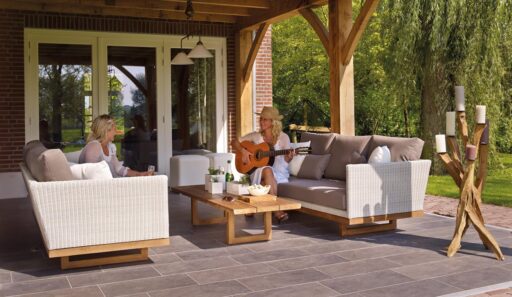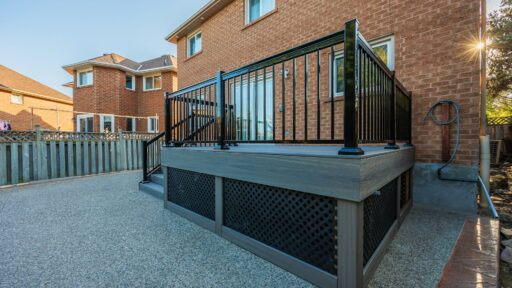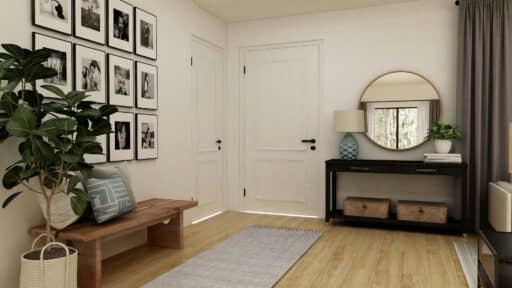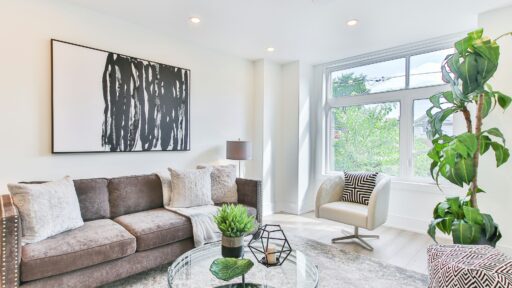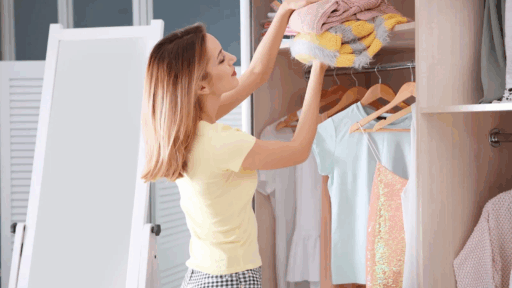A well-designed backyard isn’t just a place to put a grill and a couple of chairs. It’s an extension of your home, a space that blends comfort with nature, and a place where you can live just as easily outside as you do inside. The trick is in the details. When you plan thoughtfully and layer in the right elements, your backyard can feel like another living room, kitchen, or dining area, just with better air. Let’s look at ways to make it happen.
Start With a Thoughtful Layout That Works With the Space You Have
Just like any room in your house, your backyard needs a floor plan. It’s not about forcing a specific look, but about shaping the space so it feels intentional. A big part of that comes from how you place plants, pathways, and seating in relation to each other. The right flower bed layout can frame your yard in a way that naturally guides movement and sightlines, making it feel more connected to your home’s interior.
If the kitchen door opens to the yard, you might arrange beds and greenery to create a natural frame for a dining table. If you have a wide lawn, you could use planting areas to break up the space into cozy “zones” without building walls.
Layer in Comfort With Patio Details That Work Year-Round
A backyard can’t feel like an extension of your home if it’s only comfortable on the mildest days of the year. That’s why patio design is about more than pavers and chairs, it’s about creating a spot you’ll actually use in the heat of summer or on a chilly evening. Using patio awnings that can stand up to the elements while making the space inviting gives you shade, weather protection, and airflow. An adjustable model lets you control how much sunlight filters through, making morning coffee or an afternoon meal far more pleasant. Pair that with cushioned seating, an outdoor rug for warmth underfoot, and a few throws or blankets within reach, and suddenly the patio feels like another living room.
Blend Materials and Colors for a Seamless Transition
If your goal is to have your backyard feel like an extension of your interior, your design choices need to nod to what’s inside your home. That doesn’t mean duplicating every color and texture, but it does mean thinking about visual flow. If your kitchen has warm wood tones, try bringing that warmth outdoors with cedar furniture or stained decking. If your living room has soft, neutral textiles, pick outdoor cushions in similar tones so your eye isn’t jarred when you look from inside to out.
Even small touches, like repeating a tile pattern from your backsplash in an outdoor bar area, can make the spaces feel related. The point is to create a conversation between indoors and outdoors, so they work together rather than competing for attention.
Make Lighting Do More Than Just Illuminate
Lighting is one of the most overlooked elements in backyard design, yet it’s the detail that can completely shift the mood. Think about the difference between the glow of string lights draped above a dining table and the sharp beam of a floodlight. One invites people to linger. The other makes them feel like they’re in a parking lot. Layer different types of lighting so you can set the tone for different occasions. Soft sconces or lanterns near seating areas can mimic the warmth of indoor lamps, while in-ground lights along paths guide movement without overpowering the space.
Add Features That Encourage Gathering
If your backyard is going to function like an extension of your interior, it should be a place people naturally gravitate toward. Adding a central feature that draws people in can do the trick. This might be a fire pit surrounded by built-in seating, a long dining table for family meals, or an outdoor kitchen for cooking without missing the conversation.
The point is to give people a reason to come outside and stay there. Just as a fireplace anchors a living room, these features create a focal point outdoors. They give the space a sense of purpose, which makes it easier to use and enjoy in everyday life, not just on special occasions.
Keep the Connection Open and Easy
Even the most beautiful backyard will go unused if it’s inconvenient to access. The way you connect your interior to your exterior matters. Large sliding or folding doors can erase the barrier altogether, making the two spaces feel like one. If that’s not an option, even widening an existing doorway or replacing a solid door with one that has glass panels can help draw your eye outside.
Once the physical connection is there, make sure the transition feels smooth underfoot. Matching or complementary flooring materials can carry the interior’s visual language outside. And if there’s a change in elevation, use wide steps or a gentle slope rather than an abrupt drop. These little adjustments make it easier to step outside and use the space as part of your home.

